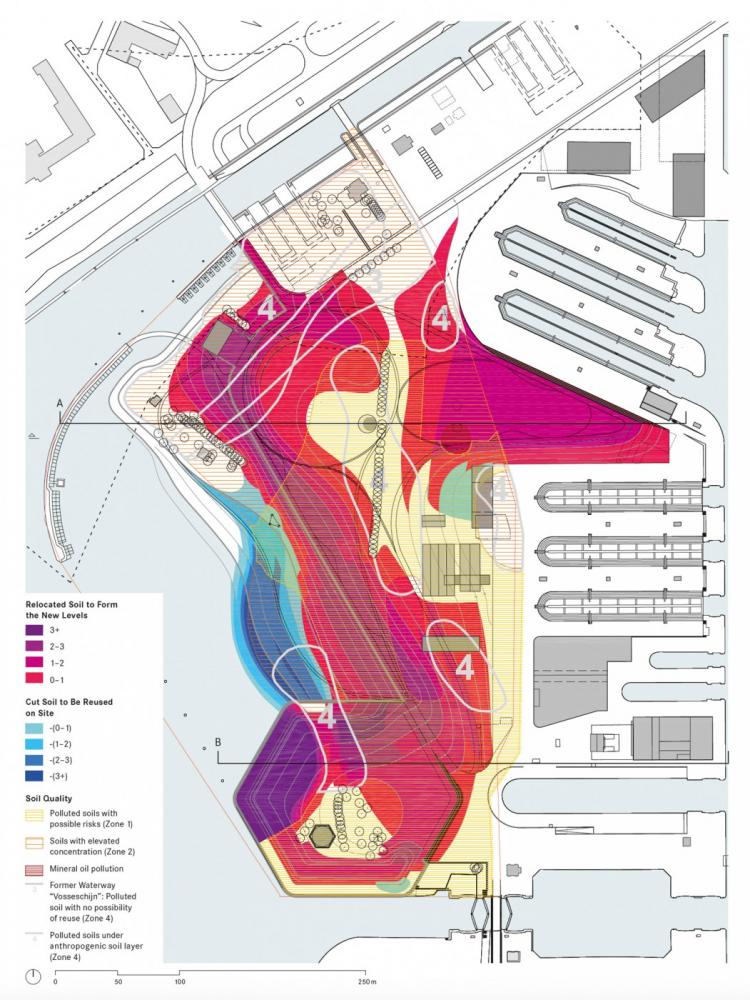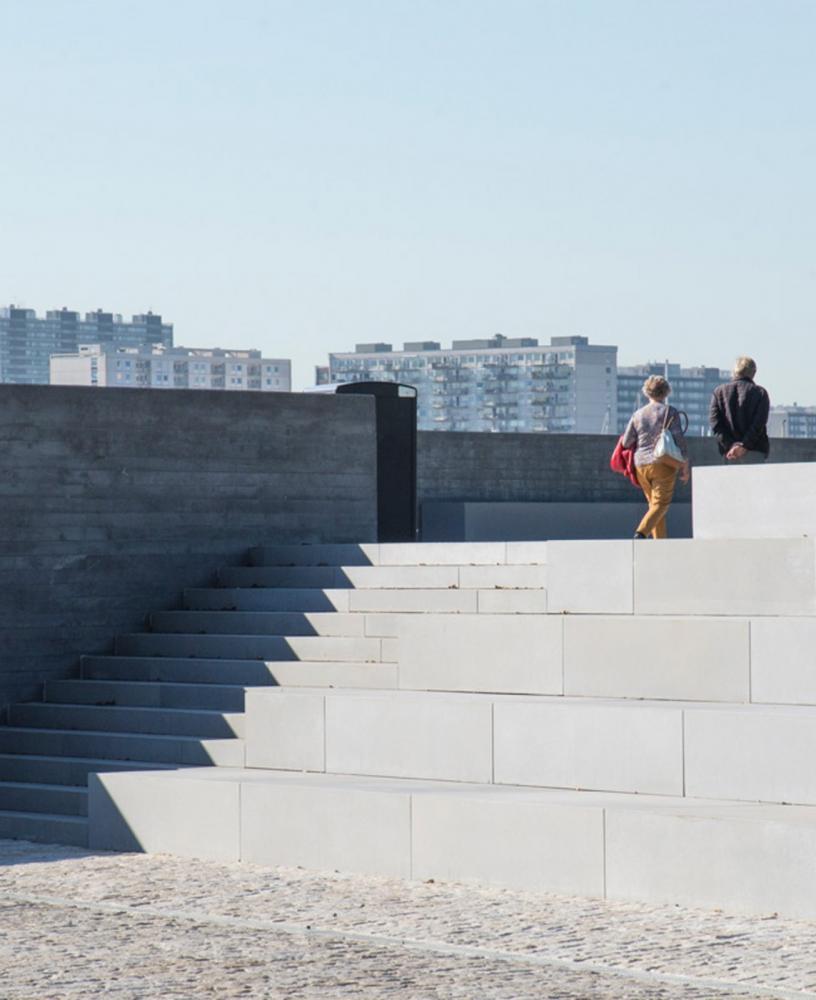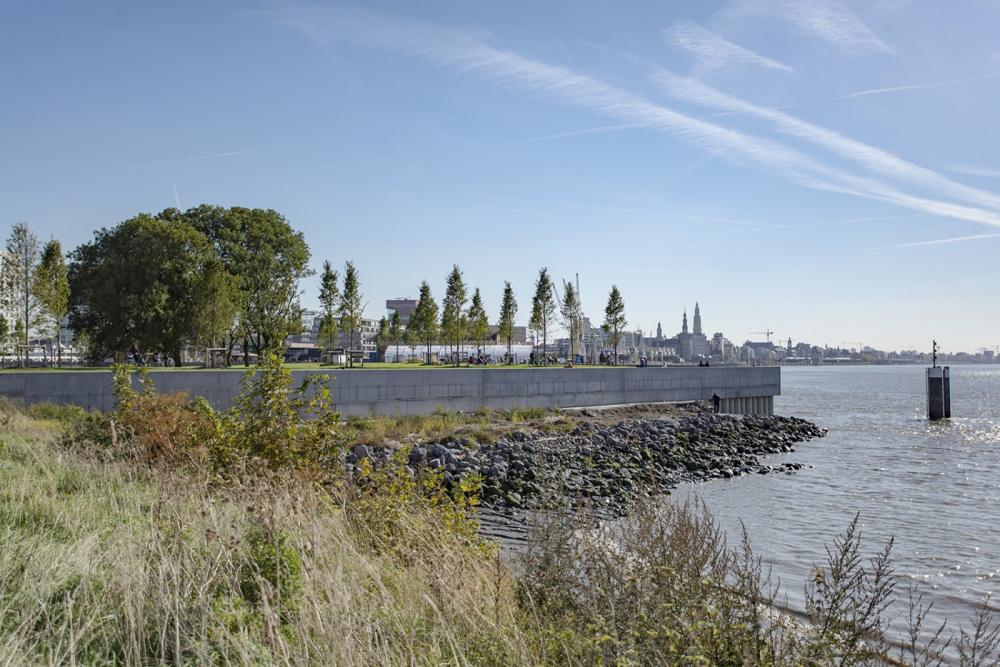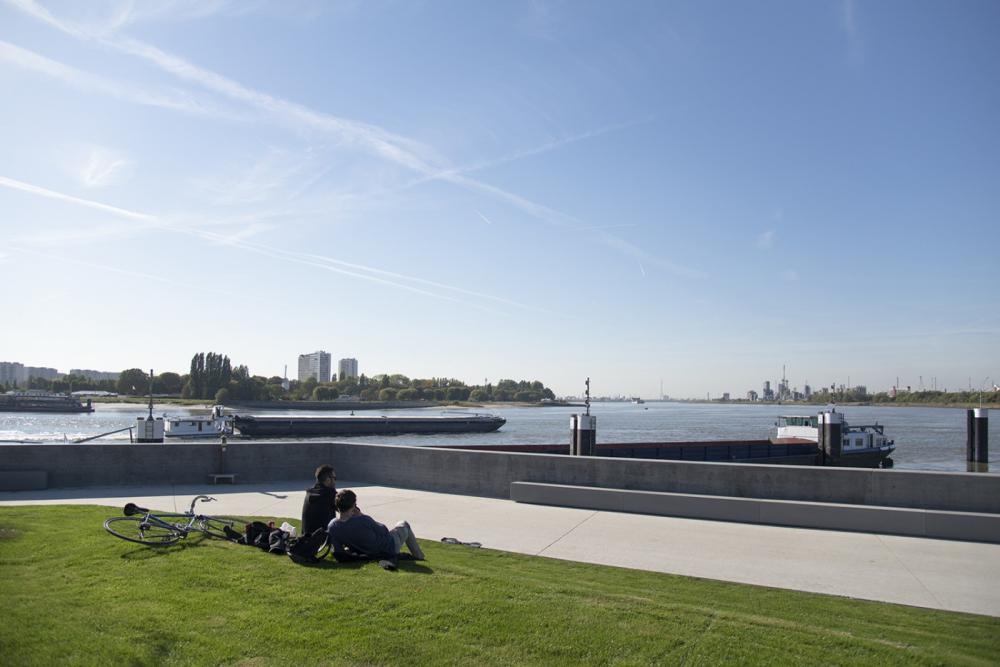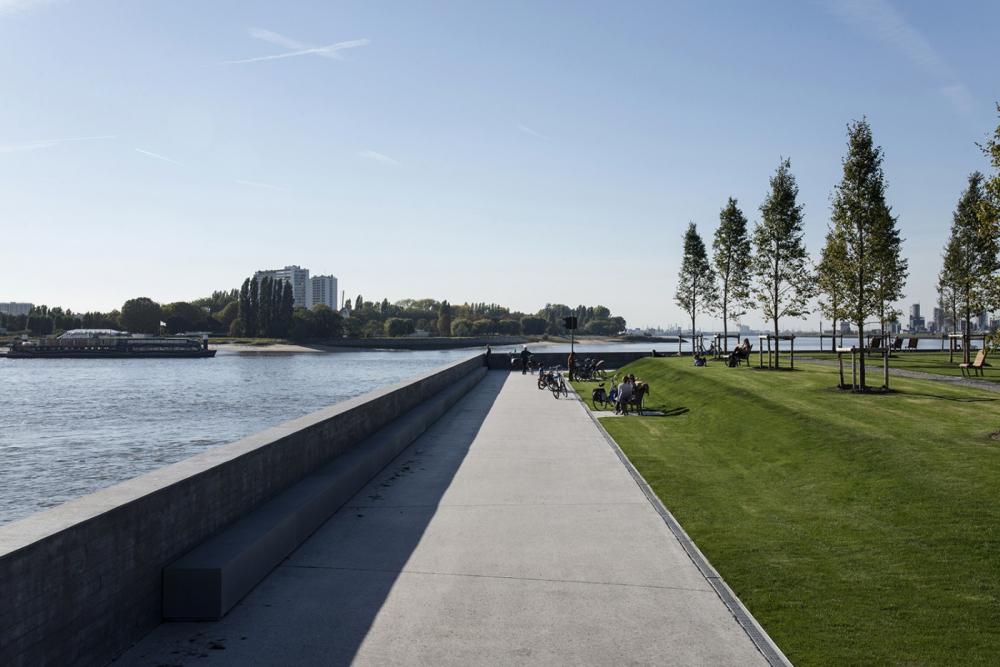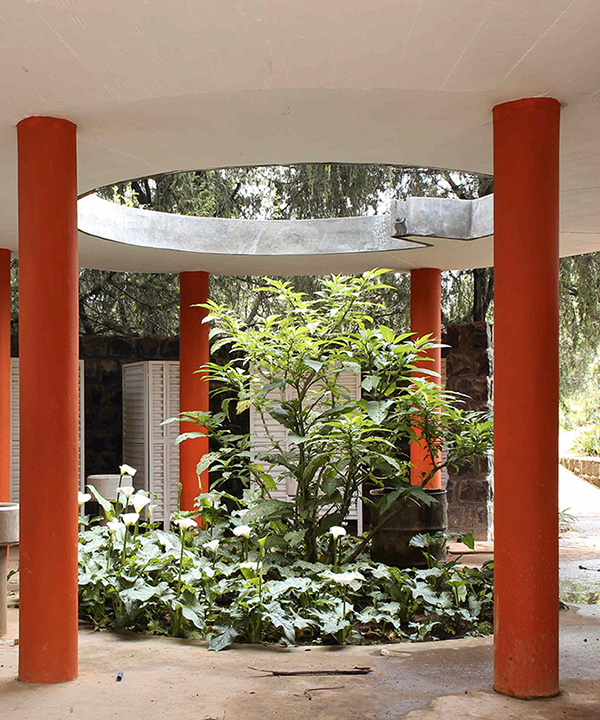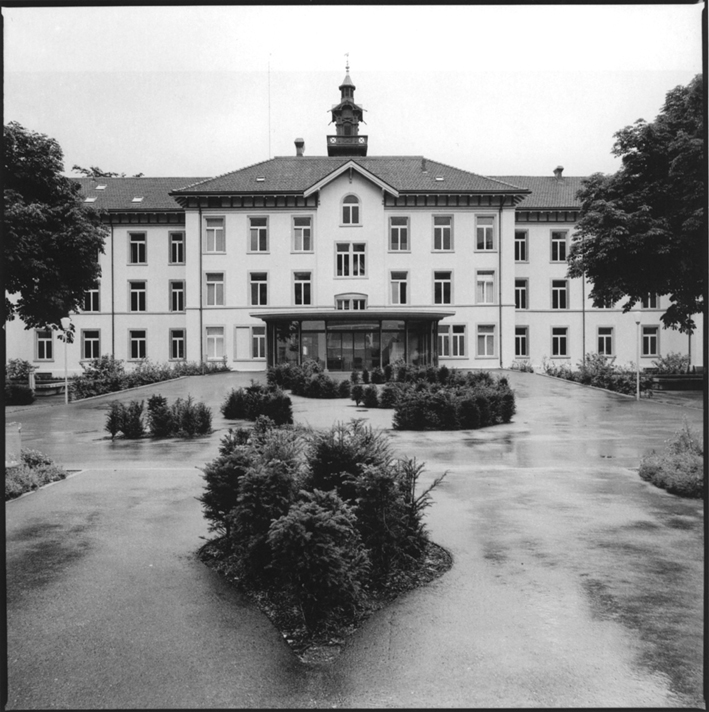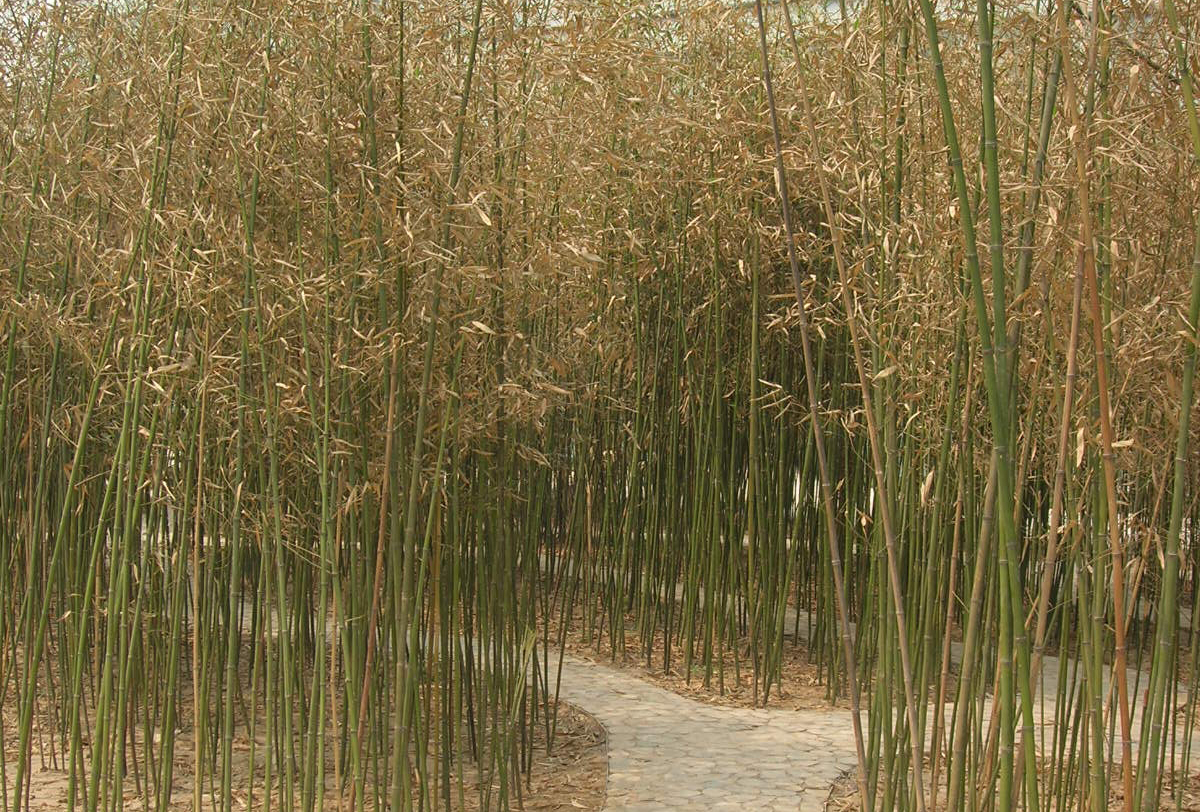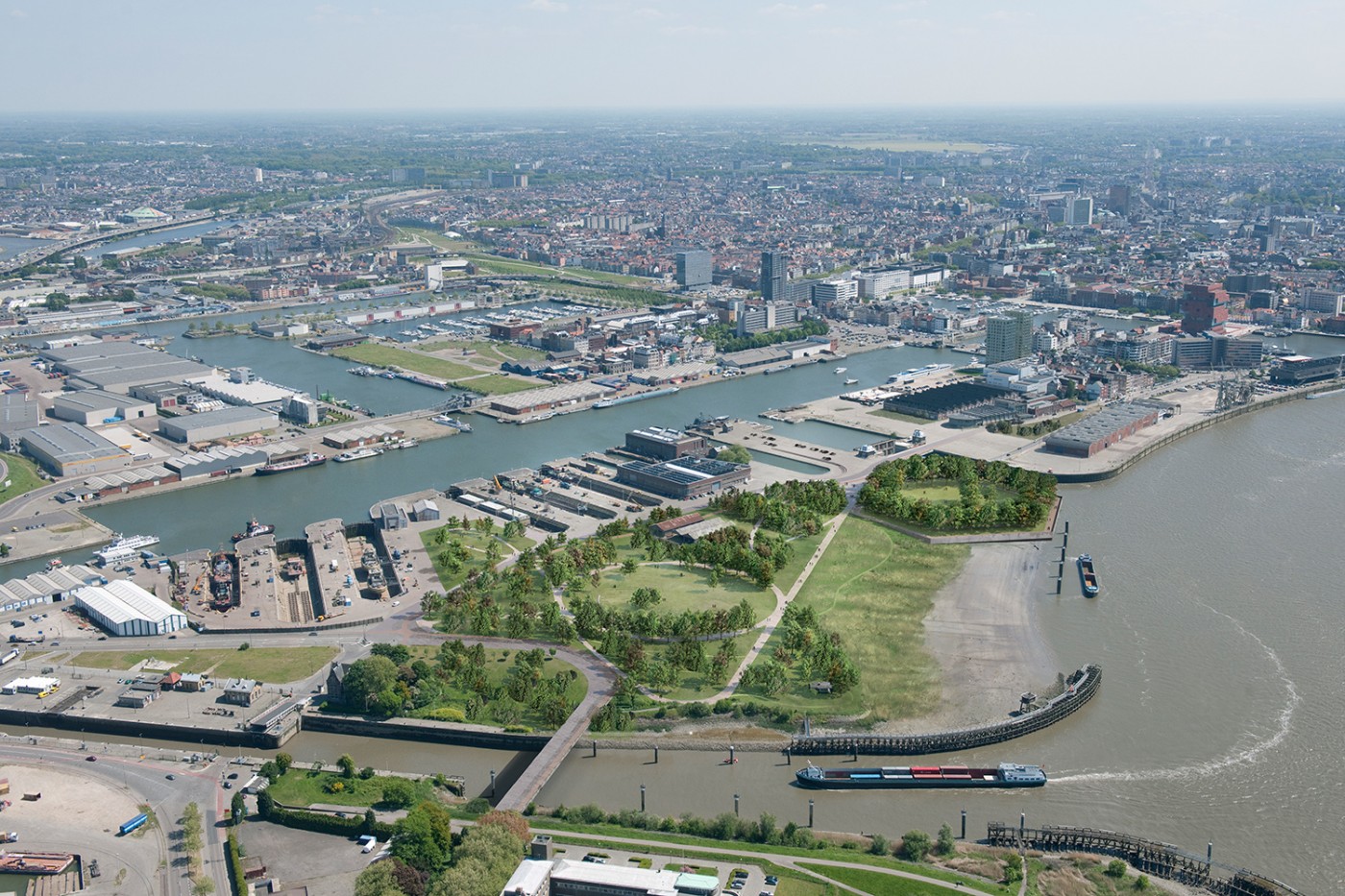
Der Droogdokkenpark ist der zentrale öffentliche Raum von Antwerpens neuem Viertel Eilandje, einem der grössten urbanen Sanierungsgebiete. Der Park erstreckt sich entlang der grossen innerstädtischen Flussschleife der Schelde innerhalb des historischen Hafengeländes aus dem 19. Jahrhundert. Aufgrund seiner strategischen Position operiert er als Knotenpunkt zwischen dem historischen Stadtzentrum, dem gross angelegten modernen Hafen und der weiten Flusslandschaft im Norden Antwerpens.
Auf dem gesamten Gelände verweisen historische Gebäude und Fragmente der ehemaligen Hafenanlagen auf die Geschichte des Ortes und binden den Park, der rundum von Wasser begrenzt ist, in seinen zeitlichen und räumlichen Kontext ein. Die Erschliessung erfolgt von vier Seiten über bestehende Schleusendämme und Brücken, die Momente der Ankunft und Abreise inszenieren. Von der Stadt kommend, ist der Haupteingang des Parks durch das Belvedere gekennzeichnet, ein ehemaliges Seezeichen für einlaufende Schiffe, das in ein geschlossenes Hexagon transformiert wird. Das Belvedere ist ein Orientierungs- und Treffpunkt innerhalb des Parks und ermöglicht den Besucherinnen und Besuchern einen Panoramablick über die Flusslandschaft, das historische Stadtzentrum und den neuen Hafen.
Der Droogdokkenpark ist Teil des Masterplans für die Flusskais, der die Umgestaltung eines mehr als sechs Kilometer langen Uferabschnitts in einem Zeitraum von 15 Jahren vorsieht, unter anderem mit einem verbesserten Hochwasserschutz und neuen öffentlichen Räumen. Die Erhöhung des bestehenden Deichs und der Kaimauer des Belvedere um einen Meter wirkt sich deutlich auf die Wahrnehmung des Flusses aus. Die erforderlichen topografischen Anpassungen ermöglichen es, die unterschiedlichen räumlichen Qualitäten des Parks zusätzlich zu betonen: Das Belvedere, die Deichpromenade und der «Grüne Finger» bilden erhöhte Aussichtspunkte, während die abgesenkte Lichtung einen Raum definiert, der auf das Innere des Parks ausgerichtet ist und nur begrenzt Blicke nach draussen erlaubt.
Eine sorgfältig geplante Choreografie der physischen Verbindungen und Blickbeziehungen fügt die neue Landschaft nahtlos in ihre unmittelbare Umgebung und zugleich in das weitere Umfeld ein. Dazu trägt auch die eingesetzte lokale Vegetation bei, die entsprechend den topografischen und hydrologischen Bedingungen des Standorts sowie der Beschaffenheit des Bodens ausgewählt wurde. Ein Netz aus Fahrrad- und Wanderwegen sowie subtil geplante Sichtachsen setzen die verschiedenen Elemente innerhalb des Parks zueinander in Beziehung. In Anlehnung an die Tradition der englischen Landschaftsparks soll der Park als inhärenter Teil der umgebenden Stadtlandschaft wahrgenommen und durch die Vermittlung zwischen alt und neu, nah und fern mit seinem zeitlichen und kulturellen Kontext verwoben werden.


